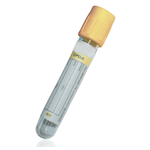Suitable Specimen Types
- Serum
- Li Hep Plasma
Sample Processing in Laboratory
Usual
Sample Preparation
Centrifuge
Turnaround Time
1 daySample Stability
Usual.
Calcium
General Information
Calcium ions affect the contractility of the heart and the skeletal musculature and are required for the normal functioning of the nervous system.
Approximately 99% of calcium in the body is stored in bones. Only around 1% of total body calcium is found in plasma. Around half of calcium in plasma exists in the ionised (active) form or is bound to proteins such as albumin (inactive). Total calcium in plasma is therefore affected by the amount of circulating albumin the blood. To account for these changes, an equation can be used to estimate what the total calcium would be if albumin was within reference range limits (usually taken to be 40 g/L).
Adjusted calcium results results are automatically calculated by the laboratory system using the following formula: [Adjusted Calcium] = [Total Calcium] + 0.016(42 – [Albumin])* Note: Adjusted Calcium is not valid for paediatric patients or if acidosis or alkalosis is present. Hypocalcaemia presents itself as tetany and osteomalacia.
Hypercalcaemia is frequently due to an increased mobilisation of calcium from the skeleton and increased intestinal absorption.
*equation in use from 28.09.23 (previous equation was [ Adjusted Calcium] = [Total Calcium] + 0.013(45.4 – [Albumin]))
Patient Preparation
None
Notes
Prolonged tourniquet use, administration of vitamin D or bendrofluazide can increase calcium concentration
EDTA or citrate contamination will decrease calcium concentration
Reference Range
Neonate (<4wks) 2.0-2.7 mmol/L
4wks-16yrs 2.2-2.7 mmol/L
Adult 2.2-2.6 mmol/L
(Source : Pathology Harmony Recommendations)
Specifications
- EQA Scheme?: Yes
-
EQA Status:
NEQAS and WEQAS
